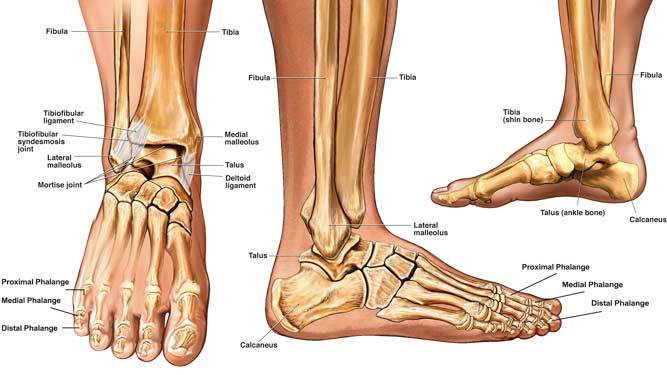
Ankle Fractures
Recognising and Managing Ankle Fractures
Ankle fractures are surprisingly common injuries, both in athletes and the general population. Being able to quickly identify the signs and symptoms of a fracture is extremely important in ensuring quick and effective medical management.
Ankle fractures come in different shapes and forms. For example, a netballer with shin splints may experience a stress fracture, while a soccer player colliding with another player may experience a large break of the bone at the base of the ankle. In either case, bony tissue has been disrupted and must be treated accordingly.
Knowing the signs and symptoms of fracture
Understandably, swelling and bruising will occur when a bony injury to the ankle takes place. Inability to bear weight on the affected leg, along with extreme pain when the affected area is touched are also very common signs of fracture. However, as an ankle sprain will often present with these same symptoms, it can be easy to misdiagnose an ankle fracture as a severe sprain.
Luckily, there are some established rules to follow if you a suspect an ankle fracture. If one or more of the following signs are present, along with a history of trauma, it is recommended that you seek medical advice as soon as possible.
1) Inability to fully bear weight on the affected limb for 4 or more steps.
2) Tenderness to touch along the inner and outer bony aspects at the base of the ankle.
3) Pain to touch at the outer part of the foot.
Following diagnosis of a fracture, the doctor may decide to use a plaster (cast) to protect the bones while they heal. Severe fractures will need to be surgically stabilized. After surgery or time in a cast, ankles can be surprisingly weak and stiff due to disuse, leaving them vulnerable to becoming reinjured.
After removal of a cast, wearing a fabric brace is usually recommended for a few weeks. The brace provides an element of stability while the joint is regaining strength and balance. During this time, it is important to start strengthening and mobilizing the ankle. A physiotherapist can develop a rehabilitation program that involves a gradual return to normal daily activities and eventually sport.
This rehab program will allow your bones to continue healing while adjusting to the increasing stresses being placed on them. You may begin rehab in a non-weight-bearing setting such as the pool, and progress to increased weight-bearing activities such as cycling. Eventually you will be able to start a weight-bearing program on the grass or even on a hard surface to assist with your return to sport.
Please click the download button below to print out a free copy of our newsletter.
Physio Direct is ACC accredited so you can come to us directly to get an injury registered with ACC without having to go to your GP first, followed by an assessment, treatment and follow up review, to ensure correct care and recovery. Physio Direct can also refer you directly for Cortisone injections, X-Rays and Ultra Sound Scans and on to Specialists if needed.
Please feel free to print out these news letters and put the in the staffroom and hand them out to your team. Understanding more about injuries, gives people the power to prevent an injury from occurring in the first place. Prevention and education is the key!
